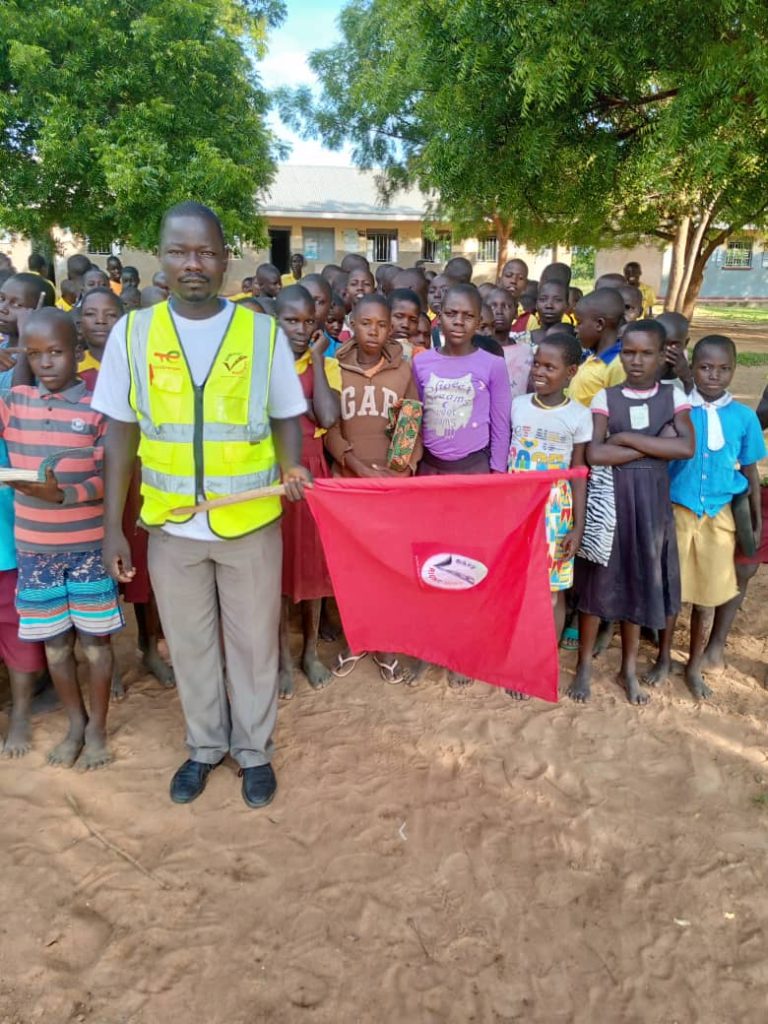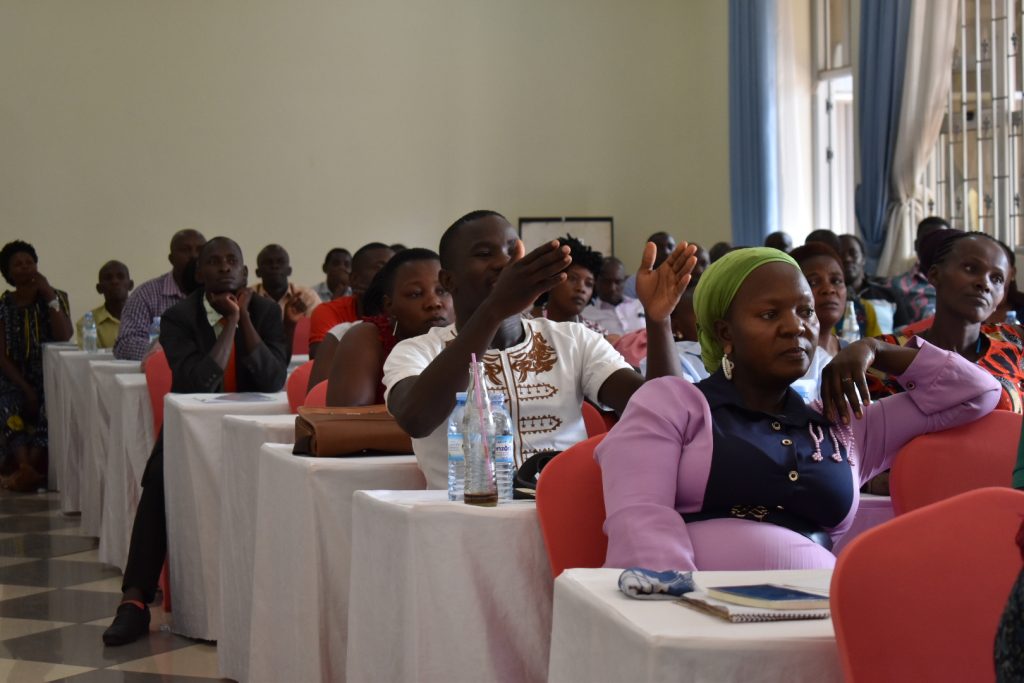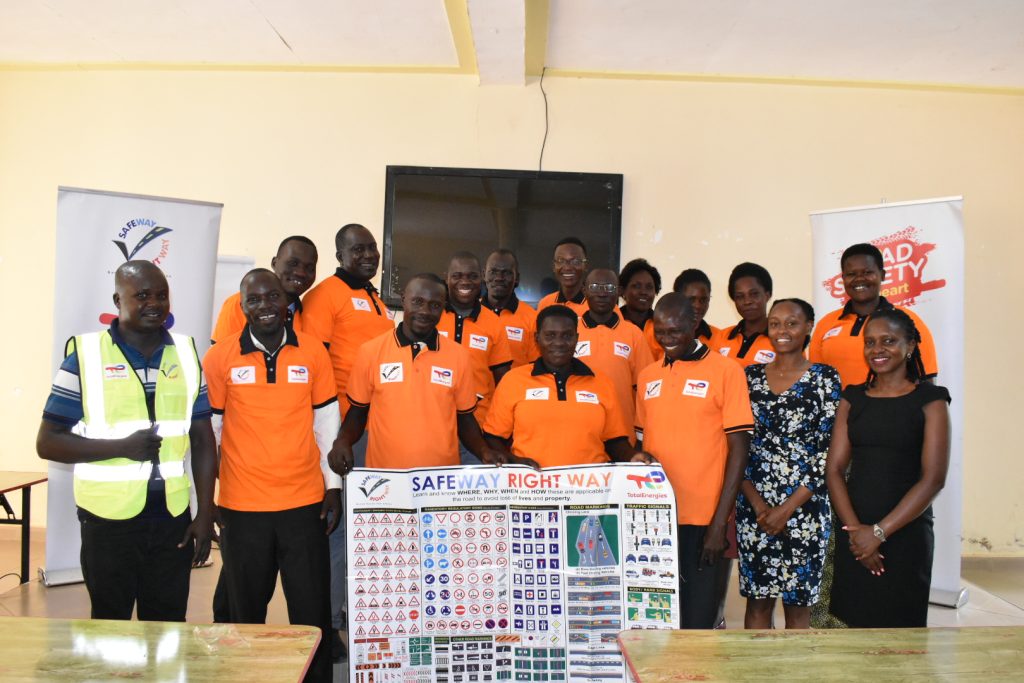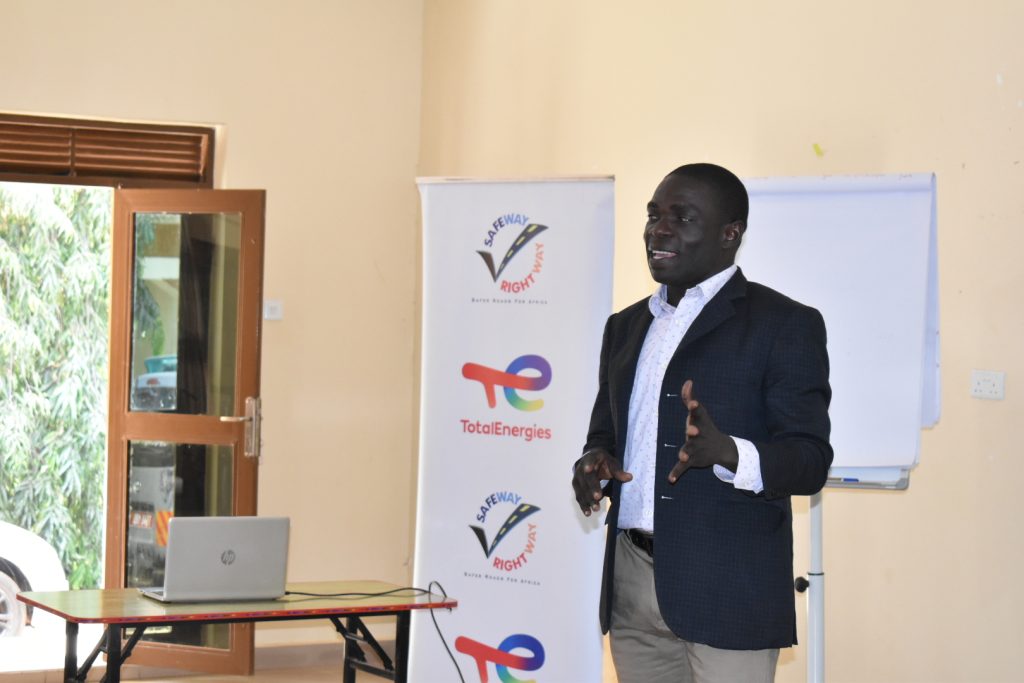The VIA – Global Road Safety Education is a collaborative project supported by Total Energies, Michelin Corporate Foundation, Global Road Safety Partnerships, and Safe Way Right Way Uganda. For over two years Safe Way Right Way has spearheaded the implementation of this project to achieve a paradigm shift in Uganda’s road safety culture, particularly among young people between the ages of 8-18. Additionally, the Uganda police report (2022) revealed that 650 Children had died as a result of road crashes, 395 of the were male and 255 female.

The rationale behind focusing on young children is clear: they often lack adequate understanding of road safety upon starting school, possess limited risk awareness, and are susceptible to danger. It is more important because the children are the future citizens of an expectedly highly motorized Uganda, hence the immediate need to ensure behavioural change, if we are to create a crash free future.
Through the VIA project, Safe Way Right Way has reached 50,000 students and seen the establishment of 20 road safety clubs in schools through the 169 VIA educators that were trained as road safety trainers. The dedication and unwavering support of the 169 teachers from 138 schools in the Albertine region and Kampala have built a strong and sustainable model foundation for the project implementation.
“Safe Way Right Way has reached 50,000 students and seen the establishment of 20 road safety clubs in schools through the 169 VIA educators that were trained as road safety trainers”
Following the 2 years implementation of the project, SWRW organized a refresher training in the Albertine Districts of Hoima, Kikuube, Buliisa, Nwoya, Pakwach, and Hoima City . This training lasted for a week, covering various aspects crucial to enhancing road safety education.


The training sessions commenced in Hoima district on January 29, 2024, followed by Kikuube, Buliisa, Pakwach, and Nwoya districts on subsequent days. The trainingworkshops were facilitated by SWRW staff and they included sessions on road signs, markings, urban traffic guidelines, general traffic rules, and necessary precautions. a presentation on road assessment findings shed light on prevalent risks, such as poorly designed roads, missing signage, and increased traffic in the Albertine region. During these sessions, stakeholders expressed their appreciation for the project’s efforts and provided valuable feedback for improvement.
In Hoima district, Ms. Asiimwe Harriet, the inspector of schools, commended Safe Way Right Way for targeting children in road safety initiatives and urged continued implementation with a focus on addressing reporting issues. In Pakwach district, Mr. Comixx praised the project’s impact and urged its extension to more schools, suggesting more approaches like installing talking compounds to reinforce road safety messages.


The VIA educators highlighted various challenges, including the lack of respect from motorists for safety measures like flags/lollipops used by teachers to help the pupils cross the roads, limited time for project implementation due to conflicting schedules, and disruptions caused by teacher transfers.
In conclusion, Safe Way Right Way views road safety education as a crucial step in enhancing road safety especially among young people. With over 1.3 million road fatalities recorded annually worldwide, predominantly in low-income countries, proactive education initiatives like VIA are essential. (WHO 2023)


 SAFE WAY RIGHT WAY
SAFE WAY RIGHT WAY
Post a comment